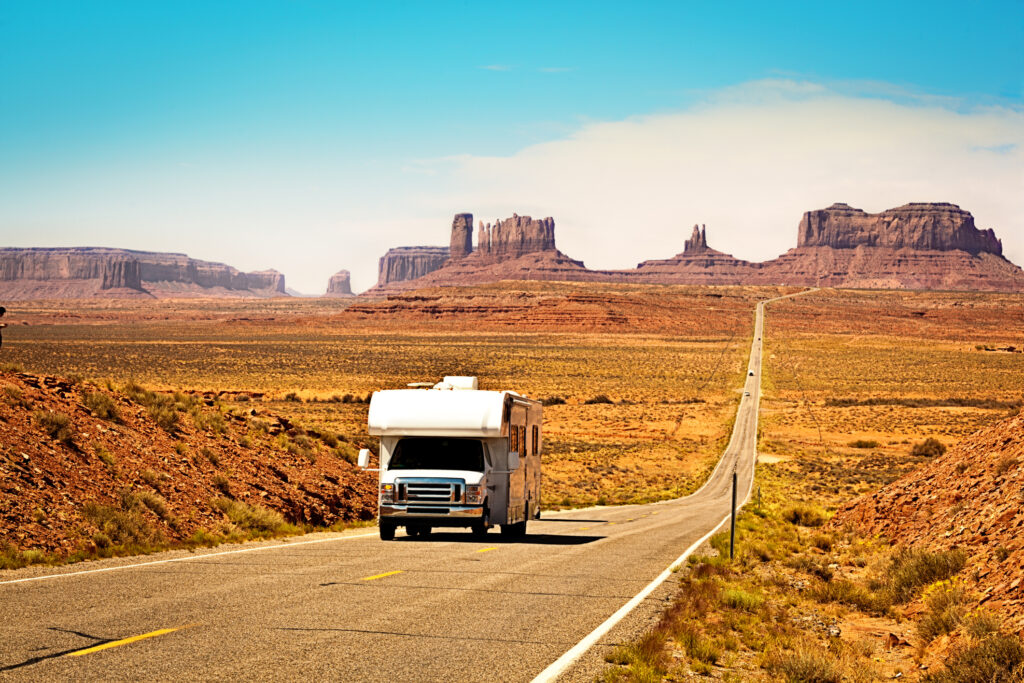How to rent an RV for $1 a day
Signing up for credit cards through partner links earns us a commission. Terms apply to the offers listed on this page. Here’s our full advertising policy: How we make money.
Update: One or more card offers in this post are no longer available. Check our Hot Deals for the latest offers.
You may be in need of a little getaway but think that a vacation is out of reach. Maybe you don’t have the stash of miles and points you need quite yet, or you simply don’t feel comfortable flying on a plane for hours because of COVID-19.
Let’s take a roadtrip!
Renting vehicles and paying for insurance could be a big portion of a vacation budget, and it’s safe to say we all like a good deal. So what if I told you that you could rent an RV or a car for $1 a day? Before your internal scam alarm sounds, let me explain.
There are companies who will charge you as little as $1 per day to drive their RV or car to a new rental leasing office. Sometimes they include incentives, such as a gas stipend or extra miles. So while the cost to rent an RV is usually expensive, this strategy is the solution for an exceedingly cheap RV road trip!

How to rent an RV for $1 a day
What is an RV relocation rental?
Within a rental car or RV rental company lies a web of demand and inventory. As demand goes up in one market, the company needs to move their inventory to that market to accommodate the office’s needs. This means that they’d have to pay hefty fees to stick their RV on a truck or train to get it to the new location. Instead, the company charges you an incredibly discounted daily fee, as low as just $1, to drive the RV or car one-way to the final destination.
The company will usually pay for a portion of the fuel through a stipend or simply sending the vehicle out with a full tank of gas and you can return it empty. They also include other incentives, such as a kitchen kit or a generous amount of extra miles so you don’t have to make a beeline to your drop-off location.
Who is eligible for RV relocation rentals?
Within the U.S., you are eligible if you have a driver’s license and are at least 18 years old. While those are the most basic requirements, all rental companies differ — some require that you are age 21 or 25 to rent. Others require those over 75 to have a medical certificate along with their driver’s license. If you are renting outside of the U.S., you may be required by the company to have an international license.
Where can I book a relocation rental?
Don’t be confused between RV rental companies and RV relocation websites. The relocation websites are a third party service that rental companies use to list their current or upcoming relocations.
Transfercar is a great place to start, with many desirable routes in spite of COVID-19’s wake. Some longer routes, like Illinois to California, will provide you with up to 10 days for $1 per day. This means you can break up that 30-hour drive into a few stints and enjoy the rest of your time at any national parks or diversions you find along the way!
Another one of the best sites for RV relocation is Imoova, mainly because you also have the option to book in multiple countries outside the U.S., such as New Zealand, Italy, Portugal, and Ireland.
Here’s a look at the platform, and also a bit of what’s currently available in the U.S. I’m not currently seeing anything available in other countries, which isn’t a bother since they don’t welcome U.S. travelers at this time.
As you can see, you’ll get gas allowances, and a week or two to deliver the vehicle to its destination. And it’s $1 per day!
You can also find good deals with proper rental companies like Cruise America or Jucy, though they aren’t quite as generous, and there are also far fewer to choose from.
[ For more money-saving tips like this delivered to your inbox, subscribe to our newsletter ]
Note that these companies don’t allow you to tow a car, so you’ll have to find your own way back home after your one-way RV trip. If the stars align, perhaps you can find another RV heading the direction of home, but realize that your biggest expense of the trip will likely be getting home. However, you could easily redeem a very reasonable number of airline miles for a one-way flight back home.
Do I need insurance?
Most companies provide basic insurance and require you to cover the excess if you are in an accident. The good news is that your personal insurance may actually cover an RV.
One key trick in the miles and points hobby is to use a travel credit card to rent a vehicle because many come with primary rental car insurance. If you damage your car, or if it’s stolen, your credit card issuer will cover the bill. Unfortunately, this does not work for RVs. Many card issuers are skittish about even covering large SUVs, let alone a big expensive RV.
Your best bet is to phone your insurance company and ask them to outline the rules in your policy. More than likely you’re going to be renting in another state, and crossing all kinds of state lines to reach your destination.
If you’re relocating a car, however, you should absolutely read our post on the best credit cards for car rental insurance.
How to maximize RV relocation rentals
Use points and miles to fly back home
So you found the ideal cheap rental, but don’t want to negate all your savings on getting back home (or to the rental pick-up location)? There are countless ways to get free flights back to your home town (or wherever you picked up your rental). The best airline credit cards or travel cards come with some gigantic welcome bonuses, worth multiple round-trip domestic flights.
One of our top picks is the Capital One Venture Rewards Credit Card, which allows you to use the rewards you earn to retroactively cover travel purchases you’ve made in the past 90 days. This is great if you’ve already found your rental and you want to leave as soon as possible. You can open the Capital One Venture, purchase your airfare with the card, and then when you earn the bonus a couple of months later, you can go back and cover your flight cost!
Pick lengthy rental periods
The longer the rental period, the better. The shorter the rental period, the closer you are to actually doing the rental company a favor. You’re not trying to work, you’re trying to vacation!
Find a gig where you won’t be rushed. There are plenty of options that last at least 10 days, meaning no matter how far the drop-off point is, you’ll have ample time to veer off the interstate.
Choose rentals that give you gas allowances
As mentioned above, some rental companies will provide you with gas subsidies, further lowering the price of your vacation. Still, the price in gas depends on how extremely you meander, but getting a $200 allowance for gas is huge. That should cover most of your route (minus detours) in the burliest of RVs.
Research the prettiest routes
Here’s a no-brainer — when planning your RV trip claim the routes that have the most beautiful scenery. Every nook of the U.S. has its own unique and wonderful qualities, but let’s face it — the Pacific Northwest is better looking than the likes of Nebraska.
There are currently a surprising amount of relocation requests from Washington to California, giving you the opportunity to view forest, mountains, ocean, and desert, all in one moderately lengthy drive.
If your goal is national parks, RVing is a golden ticket. Read our post on the best campsites in the U.S. for some inspiration.
Another hugely popular activity for RVing (or road-tripping in general) is Route 66. There are plenty of fun things to do along your trip, so if you can manage to conduct your trip through this touristy road, you’ll never find yourself bored.
Bottom line
Few vacations are as cheap (and fun!) as RVing through this fabulous country by taking advantage of relocation services. RV renters will practically give you a free rental if you’ll simply drive their RV back to where it belongs.
This could be a choice holiday, especially if you’re less inclined to board a plane or stay in a hotel due to the coronavirus. It’s great for senior travel, too! Just be aware that these rentals are one-way, so you’ll have to get yourself home. If you elect to fly, you can offset your costs by using points earned from a travel credit card. That’s sure to keep your final cost low.
For more posts like this delivered to your inbox, subscribe to our newsletter!
Featured image by YinYang / Getty Images.
Editorial Note: We're the Million Mile Secrets team. And we're proud of our content, opinions and analysis, and of our reader's comments. These haven’t been reviewed, approved or endorsed by any of the airlines, hotels, or credit card issuers which we often write about. And that’s just how we like it! :)






Join the Discussion!